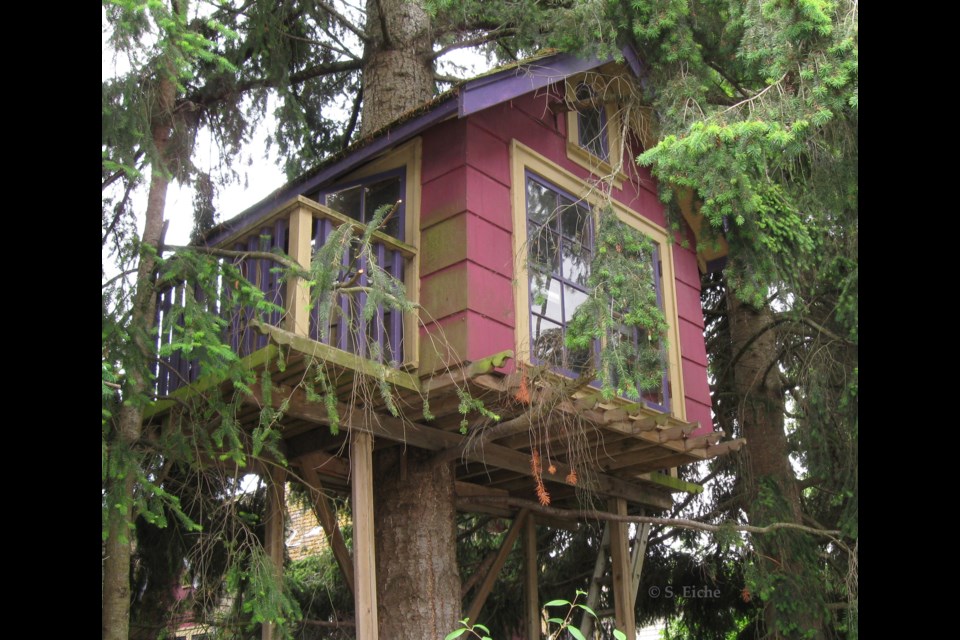It’s not often that I wish for a red traffic light, but I do when I approach the intersection of No. 1 Road and Garry Street. Stopping there gives me the chance to admire a rustic treehouse peeking out of the boughs of a massive evergreen. It surprised and delighted me the first time I saw it, and ever since I make sure I go along that same route when I head to Steveston.
Treehouses are now a rarity but they enjoyed enormous popularity in the past. In fact, our penchant for hanging out in trees may have begun millions of years ago. But further along the time line, in the first century AD, the Roman Pliny the Elder described two treehouses built in plane-trees, one of which was visited by the emperor Caligula. He was so impressed with it that he appropriated it for a banquet for 15 guests – who sat on the horizontal branches of the tree.
Pleasure and entertainment weren’t the only attractions associated with treehouses. They could also be places of refuge. It wasn’t unheard of for a medieval monk to withdraw to a shelter erected in a tree. There he could write and meditate, immersed in nature. If he had a ladder to pull up behind him, he could also avoid all danger of being disturbed.
By the sixteenth century in Italy, treehouses had become elaborate constructions, challenging the imagination of architects. Foreign travellers described them in their journals, and artists depicted them in prints, drawings and paintings. In Tuscany, the Renaissance gardens of the Medici villas at Castello and Pratolino had treehouses that even included waterworks to simulate rain showers, which were turned on to drench unsuspecting visitors – a childish sense of humour was typical of that period.
In the succeeding centuries, treehouses could be found in parks and gardens in most European countries. Their designs ranged from the rustic to the extravagant, as can be seen in illustrations found in books on gardens published in the nineteenth century.
A new impetus to the building of treehouses is believed to have been given by the novel “Swiss Family Robinson,” written in 1812 by J. R. Wyss, about a shipwrecked family that found salvation on a tropical desert island where they lived in a treehouse. It even inspired a grand project in Plessis, now a suburb of Paris. In the mid-nineteenth century, Joseph Guesquin, innkeeper, built a series of pavilions in an ancient chestnut tree, which served as dining rooms, with the meals hauled up by way of pulleys. Over time more treehouse-restaurants joined Guesquin’s. The area became known as the Parc Robinson, and in 1909 the village was renamed Plessis-Robinson. Sadly, the treehouses didn’t survive for long after World War II.
Richmond’s ongoing building boom is leading to the destruction of many grand trees. Couldn’t developers be encouraged to keep them and build treehouses in them instead? They’d make great offices for anyone who’s decided to continue working from home even after the pandemic.
Sabine Eiche is a local writer and art historian with a PhD from Princeton University. She is passionately involved in preserving the environment and protecting nature. Her columns deal with a broad range of topics and often include the history (etymology) of words in order to shed extra light on the subject.



